Peter Berkowitz builds sleeping pod in friend's apartment to escape San Francisco rents
Bay Area illustrator Peter Berkowitz has constructed a tiny wooden bedroom for himself in a friend's living room to avoid paying San Francisco's "absurdly high" rents.
Berkowitz's sleeping and working space measures just eight feet long (2.4 metres), 3.5 feet wide (one metre) and 4.5 feet tall (1.4 metres).
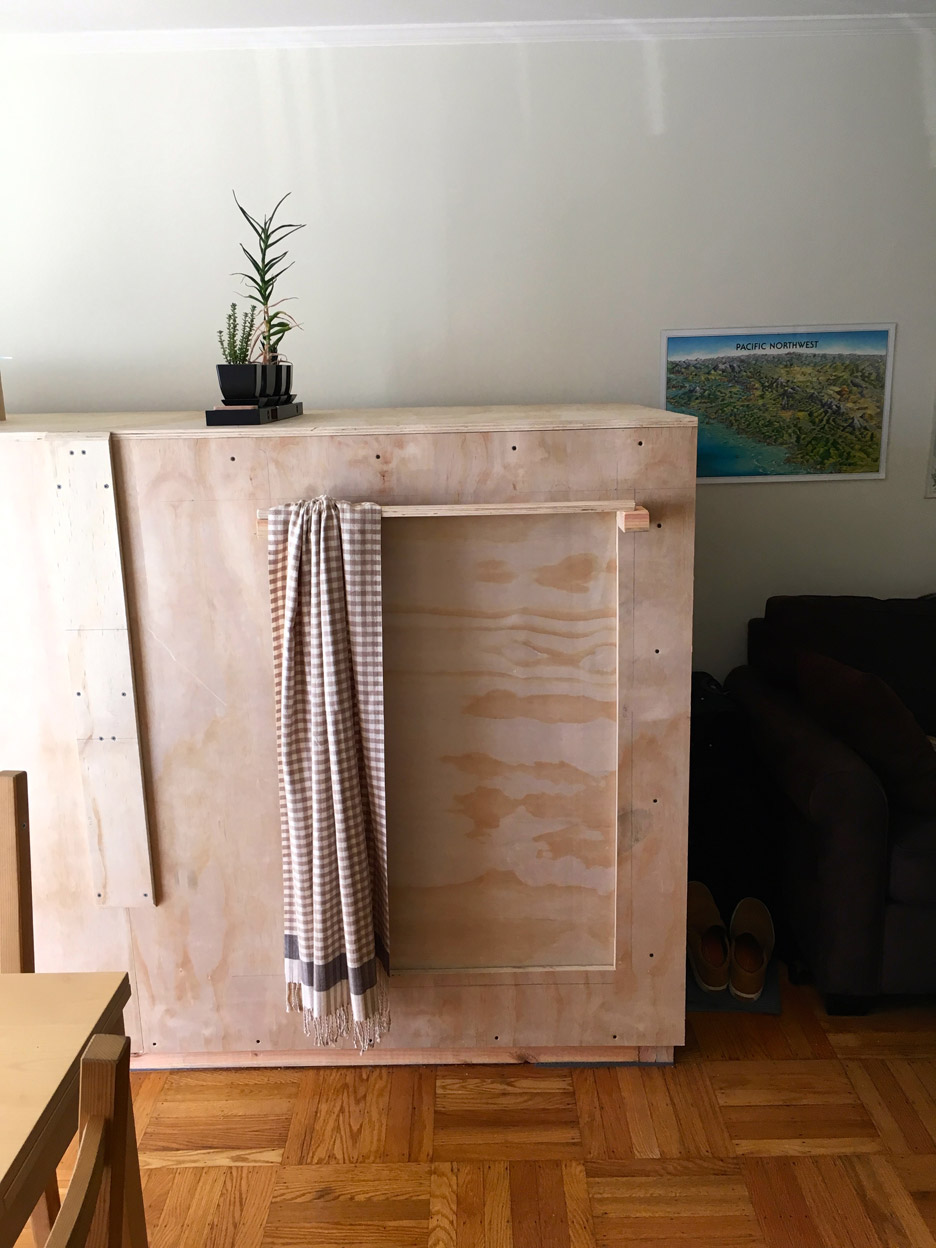
"Yes, living in a pod is silly," he said. "But the silliness is endemic to San Francisco's absurdly high housing prices."
"I am legitimately very happy living in my pod and am saving thousands of dollars per year doing so," Berkowitz told Dezeen.
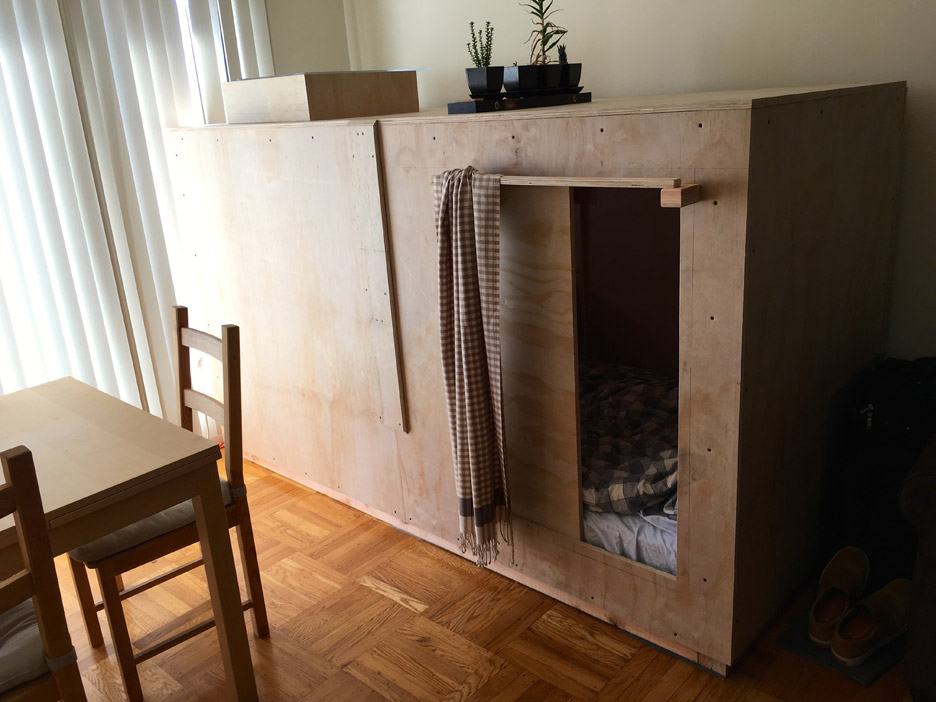
He pays $508 (£353) per month to live up the street from the beach in San Francisco – $400 (£278) for rent and an extra $108 (£75) to cover the full $1,300 (£903) construction cost spilt over 12 months.
Soaring accommodation costs in many cities are forcing designers to come up with innovative solutions for compact living. Small temporary homes set up inside unfinished high rises in tropical cities, student-style accommodation for adults in London and modular micro apartments in New York are among some of the ideas.
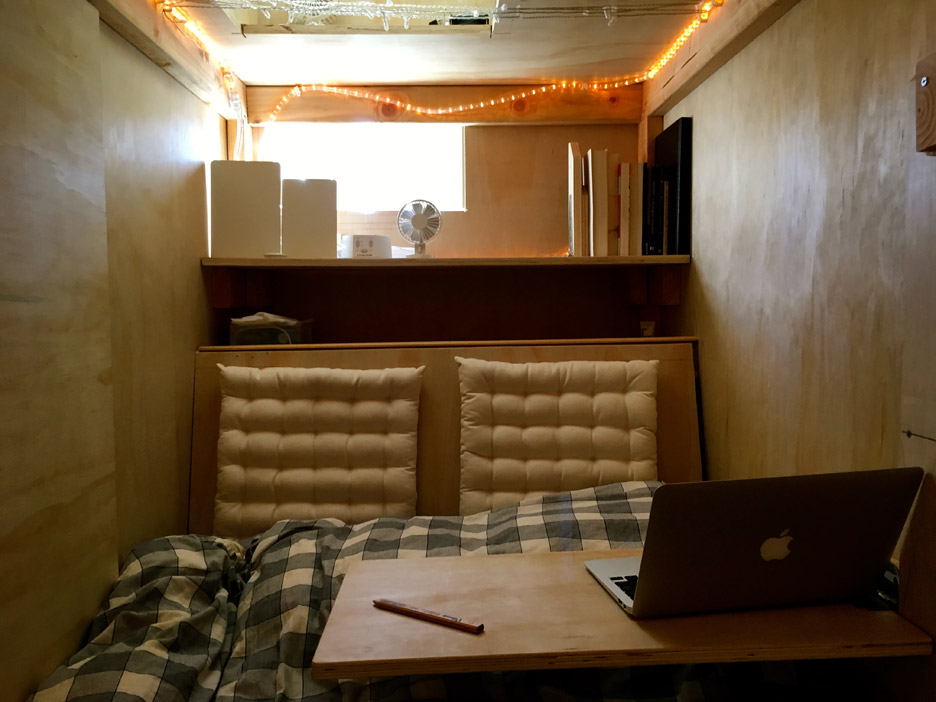
Berkowitz and his friends built the pod using plywood sheets and power tools. The cuboid box features a sliding door at the foot of the bed, which can also be covered by a scarf-like curtain.
Inside, the bed takes up the majority of the space. A slanted headboard conceals storage space behind, while a shelf and a small window are located above. A slightly raised section of the roof can be opened up to provide some extra headroom.
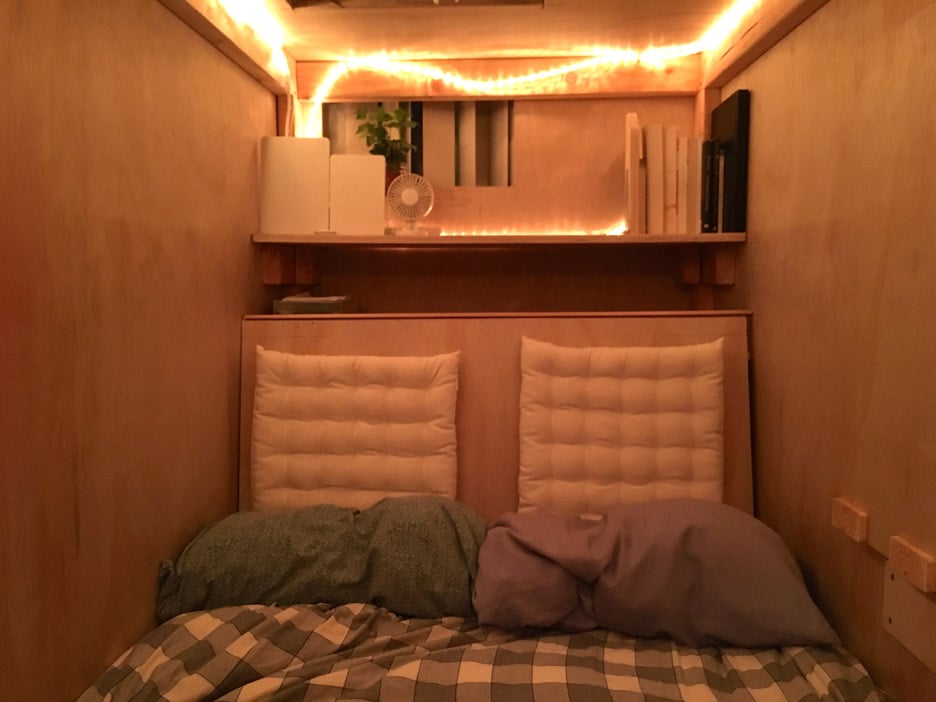
There's also a small desk that folds down over the bed for working. A strip of LEDs runs around the top edges for lighting at night. "It's the cosiest bedroom I've ever had," Berkowitz said.
Similarly snug sleeping spaces include a capsule for taking power naps at the office and tiny hotel rooms for dozing at airports.
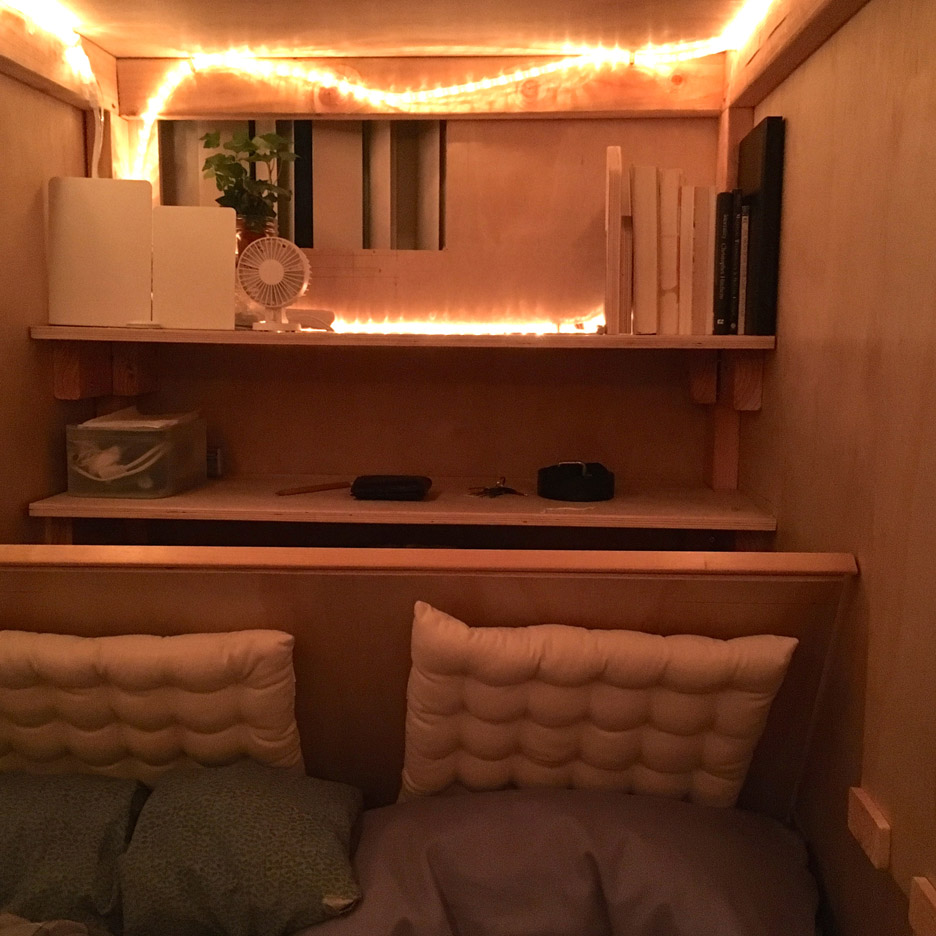
Berkowitz moved into the pod earlier this month, but is still adding features to help integrate it into the living space and provide benefits for his room mates.
"I'm putting bookshelves on the side and probably the top," he said. "Also thinking about building a bench for a dining room table – the pod shouldn't just take up space but actually improve the room."
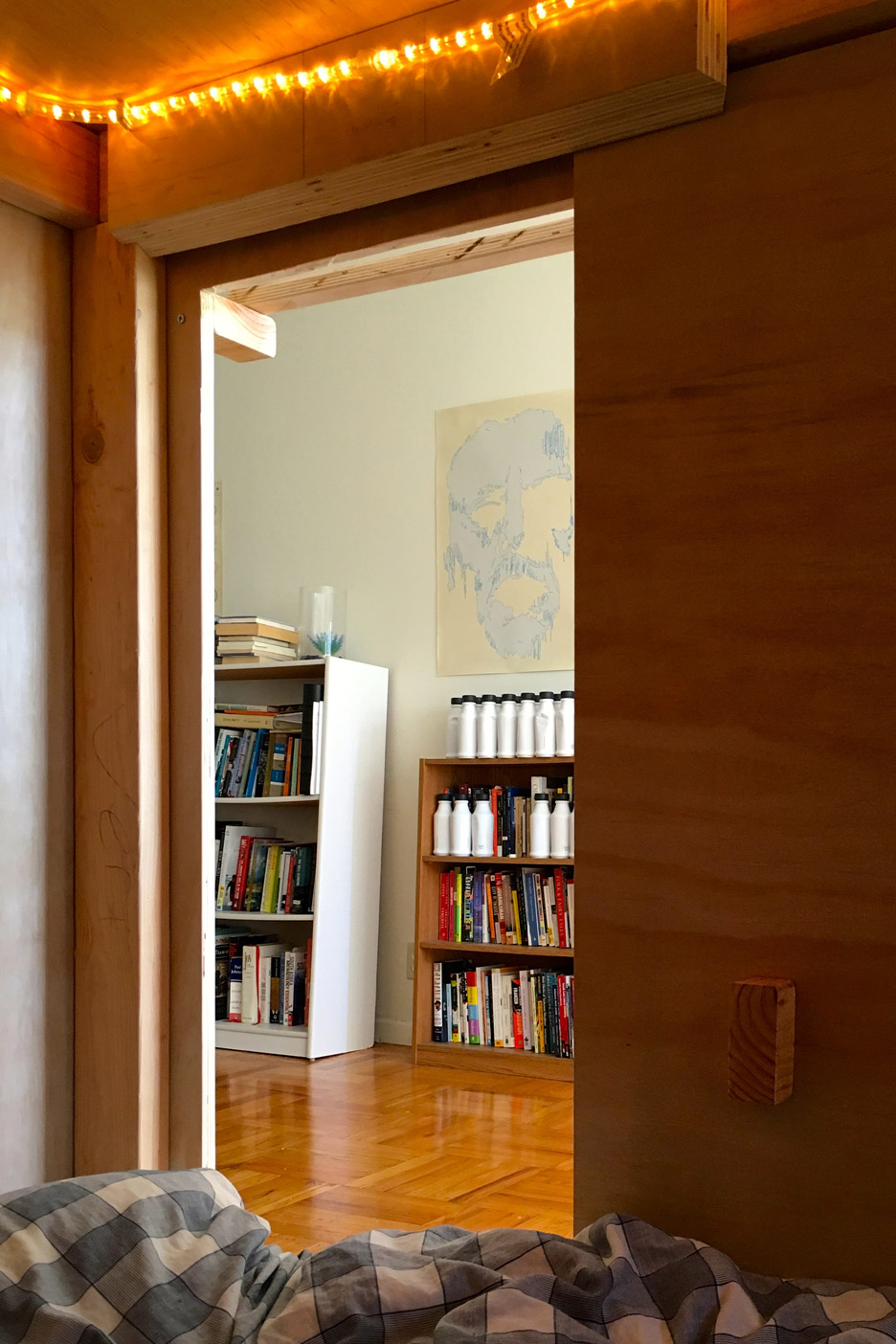
Berkowitz told Dezeen that he got the idea for the project from a college room mate who set up a tent in the centre of his room.
"He filled it with pillows, strung Christmas lights, and perhaps not too surprisingly it was a very comfortable and often-used setting for hanging out," Berkowitz said.
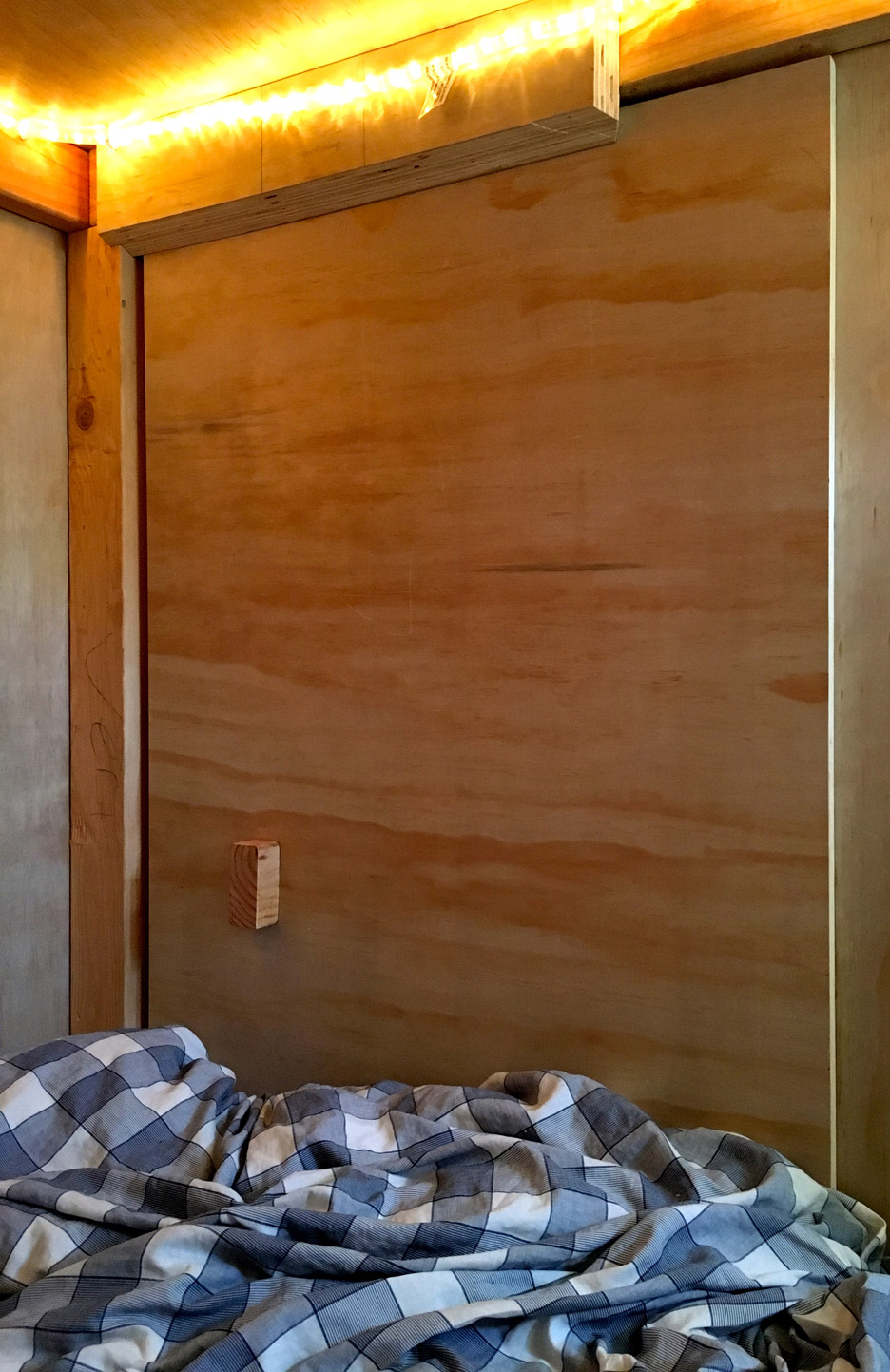
He believes his solution could help others in a similar financial situation.
"If pods can provide an attractive way to add a bedroom to an apartment, I think they could help a lot of people out," he said. "People with the extra space wanting to bring in more money by subletting, people looking for cheap and simple housing, or people wanting to add another bedroom so their friend can move in could all benefit."
In 2012, San Francisco city chiefs voted to allow the development of "micro apartments" as small as 20 square metres (215 square feet) in an attempt to alleviate the housing shortage in the US city.
Speaking to Dezeen earlier this month, influential real-estate developer Ian Schrager said that these kinds of projects could help cities retain their diversity.